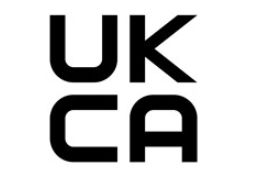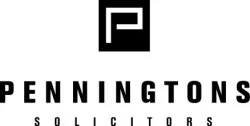The new UKCA ('UK Conformity Assessed') mark will replace the existing CE mark for relevant products sold in Great Britain when the Brexit transition period ends on 31 December 2020 (subject to any amendments contained in any EU-UK trade deal reached).
On 1 September 2020, the UK Government published guidance on the UKCA mark (available here). Set out below is a brief overview of what companies need to know to prepare for the changes.
The UKCA mark will look like this:

A separate regime exists for Northern Ireland. The UK Government published guidance on 30 October 2020 on the UK(NI) mark, see here. A full list of products that will require the UKCA mark can be found in the guidance here.
Technical requirements for the UKCA mark
For now, the technical requirements ('essential requirements') and the conformity assessment processes used to demonstrate conformity with safety standards for the UKCA mark will remain largely the same as those currently applicable for CE marking. Looking ahead, the UK Government may choose to deviate from EU rules, as necessary and permissible under any trade deal reached.
The size and location of the UKCA mark will remain essentially the same as the CE mark. However, following a two-year transitional period, from 1 January 2023, the UKCA mark must be affixed directly to the product, as opposed to supporting packaging or documentation. A notable exception to this is medical devices. This is a critical change that may require changes to product design and possibly labelling for companies in due course.
Requirements for a Declaration of Conformity
A UK Declaration of Conformity (DoC) will be needed for most products bearing the UKCA mark. In the DoC, if the company is a producer, importer, authorised representative or manufacturer, it should:
- declare that the product is in conformity with the relevant statutory requirements applicable to the specific product; and
- make sure the document has the name and address of the manufacturer (or its authorised representative) together with information about the product and the conformity assessment body (where relevant).
The UK DoC should also be available to market surveillance authorities on request.
The information required on the DoC will largely replicate that required currently on an EU DoC. It can vary depending on the applicable legislation but generally should include:
- the company's name and full business address or that of its authorised representative;
- the product's serial number, model or type identification;
- a statement, acknowledging the company takes full responsibility for the product's compliance;
- the details of the approved body which carried out the conformity assessment procedure (if applicable);
- the relevant legislation with which the product complies;
- the name and signature of the manufacturer (or authorised representative);
- the date the declaration was issued; and
- supplementary information (if applicable).
The company will need to list:
- relevant UK rather than EU legislation; and
- UK designated standards rather than standards cited in the Official Journal of the European Union.
The relevant UK and equivalent EU legislation can be found in the table here.
It should be noted that on 1 January 2021, the UK standards will be substantially the same, with the same references used in the EU standards. However, they will use the prefix 'BS' to indicate that they are standards adopted by the British Standards Institution as the UK's national standards body.
Earliest date for use of the UKCA mark
The product must have a UKCA mark from 1 January 2021, if all of the criteria below apply:
- it is covered by legislation which requires the UKCA marking (see above);
- it requires mandatory third-party conformity assessment, as opposed to self-declaration; and
- a conformity assessment of the product has been carried out by a UK-based conformity assessment body and conformity assessment files have not been transferred from the UK body to an EU-based body before 1 January 2021.
Existing stock
The rules for applying the UKCA mark do not apply to existing stock. Products that have been completely manufactured and are ready to be placed on the market prior to 31 December 2020 can still be placed on the GB market after 1 January 2021 even if they would otherwise require the UKCA mark. In these cases, a company's products can still be sold in Great Britain with a CE marking even if covered by a certificate of conformity issued by an EU body, because they are CE mark compliant prior to the cut-off date.
Conformity assessment bodies
From 1 January 2021, any mandatory third-party conformity assessment for the EU market will need to be carried out by an EU-recognised conformity assessment body. UK conformity assessment bodies will no longer be able to carry out mandatory conformity assessment for products being placed on the EU market unless this is agreed in trade negotiations.
From 1 January 2021, the UK Government is putting in place a domestic legal framework that will allow UK conformity assessment bodies to continue operating for most products being placed on the GB market. Most conformity assessment bodies in the UK will automatically have their status converted under the new UK framework.
A new UK database will replace the EU's New Approach Notified and Designated Organisations (NANDO) database. The database records the bodies which have been designated to carry out conformity assessment according to a directive. The United Kingdom Accreditation Service (UKAS) will continue as the national accreditation body (where relevant).
A company's products may have undergone conformity assessment and as such it may be worth reviewing which bodies have carried out the assessments and checking that the bodies are covered under the automatic conversion of status. Any certificates issued before 1 January 2021 will continue to be valid for the UK market and will be treated as if they had been issued under the new UK framework.
GB market for CE-marked products
The UK Government has stated that CE-marked goods that meet EU requirements can continue to be placed on the market in Great Britain until 31 December 2021. This is only where EU and UK requirements remain the same. Those goods would have to meet the following criteria in order to continue to use the CE mark:
- the CE mark is applied to the goods on the basis of self-declaration;
- any mandatory third-party conformity assessment was carried out by an EU-recognised notified body; and
- the certificate of conformity previously held by a UK-approved body has been transferred to an EU-recognised notified body.
EU market for UK manufactured products
The UKCA marking will not be recognised on the EU market. If a company has obtained a certificate of conformity from a UK-based notified body and applied a CE mark to its products on that basis and wants to continue to sell that product on the EU market, the company will need to apply for a new certificate from an EU-based notified body.
Products marked with both the CE and UKCA marks
The UK Government has confirmed that goods can carry both the CE mark and UKCA mark, on the premise that they meet the UK and EU regulations (which, at the time of writing, are the same). As such, companies may consider applying both marks in order to sell the same product in both the EU and GB markets but should consider the financial implications, as this could mean changes to a product's packaging, labelling or design.
If you represent a UK-based or international business and require advice in relation to product safety and regulatory issues, including the new UKCA marking regime, product labelling or the management of product liability risks, you can contact the regulatory compliance team for more information.
This article has been co-written with James Mitchell, a trainee solicitor in the commercial dispute resolution team.
The content of this article is intended to provide a general guide to the subject matter. Specialist advice should be sought about your specific circumstances.

